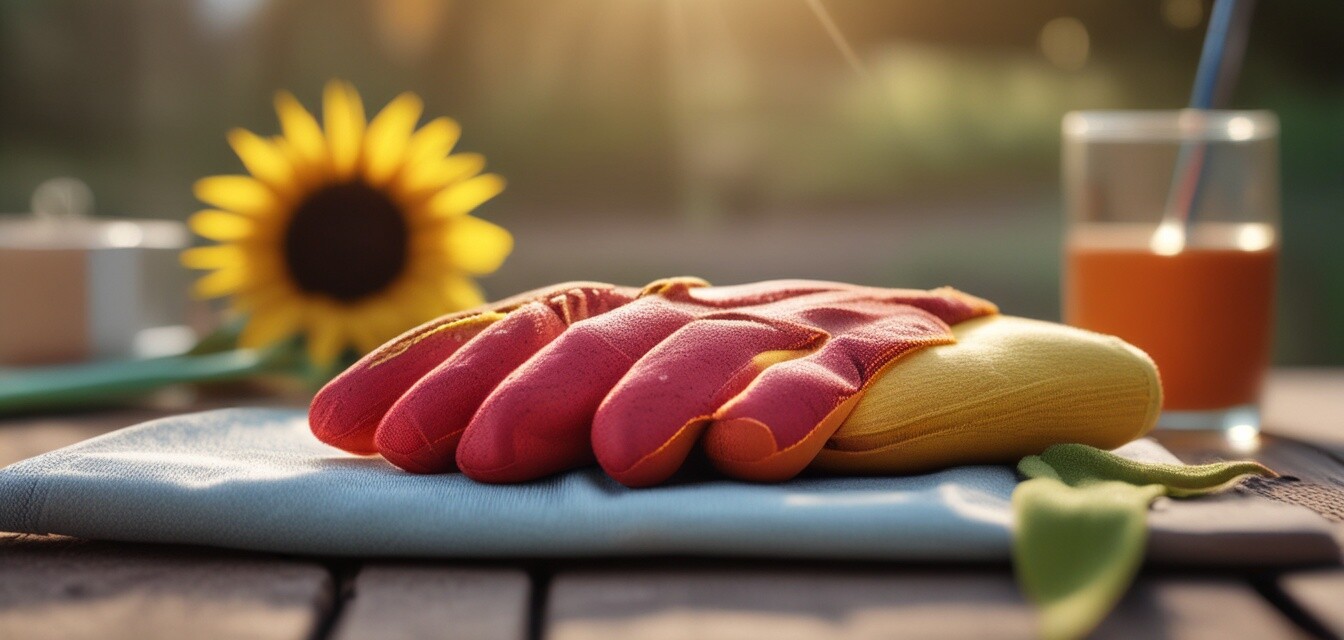
Educating children about UV protection for their hands
Key Takeaways
- UV rays can significantly affect children's skin, especially exposed areas like hands.
- Teaching children about UV protection is essential for instilling good habits.
- UV protective gloves are effective accessories for outdoor activities.
- Using stories and games can make learning about UV protection fun for kids.
- Regularly checking UV forecasts can encourage proactive sun safety measures.
As summer approaches and outdoor play begins, it's essential to educate children about the importance of UV protection, particularly for sensitive areas like their hands. Exposure to UV rays can lead to skin damage, so equipping kids with knowledge and tools is vital. This article provides tips and strategies for teaching children about wearing UV protective accessories, such as gloves, while they enjoy outdoor activities.
Understanding UV rays and their effects
Before diving into how to educate children, it's crucial to understand what UV rays are and how they can affect skin, especially in young children. UV rays come primarily from the sun and are classified into three types: UVA, UVB, and UVC. While UVC rays are absorbed by the ozone layer and don't reach the Earth's surface, UVA and UVB rays do.
| Type of UV Ray | Description | Effects on Skin |
|---|---|---|
| UVA | Penetrates deep into the skin, causing long-term skin damage. | Premature aging, skin cancer risk. |
| UVB | Primarily responsible for sunburn. | Redness, blistering, skin damage. |
Why UV protection for hands is essential
Children's hands are often exposed during outdoor activities such as playing, swimming, or even simple gardening. Neglecting to protect them can lead to skin damage over time. Since children's skin is thinner and more sensitive than adults', they are more susceptible to the harmful effects of the sun.
Long-term benefits of educating children
By teaching children about UV protection early, we help nurture lifelong habits that ensure their skin stays healthy. Here are a few benefits:
- Increased awareness of sun safety.
- Establishment of protective behaviors at a young age.
- Empowerment to make informed choices regarding outdoor activities.
Strategies for teaching children about UV protection
1. Use stories and visuals
Utilizing engaging stories or visuals can help highlight the importance of UV protection:
- Read books that emphasize sun safety.
- Use videos or cartoons that teach UV protection concepts.
2. Incorporate playtime learning
Children learn best through play. Here are some fun ways to incorporate lessons into their outdoor adventures:
- Create a scavenger hunt where they find UV protective accessories.
- Organize games that require the use of UV gloves, emphasizing their importance.
3. Regularly check UV forecasts
Teach children to look for UV index reports in weather updates. Discuss how different weather conditions affect UV exposure:
| UV Index Level | Risk Level | Protection Needed |
|---|---|---|
| Low (0-2) | Minimal risk | No protection needed |
| Moderate (3-5) | Moderate risk | Wear a hat and sunglasses |
| High (6-7) | High risk | Use sunscreen, wear protective clothing |
| Very High (8-10) | Very high risk | Avoid sun exposure during peak hours |
| Extreme (11+) | Extreme risk | Use full protection and stay in the shade |
4. Lead by example
Children often mimic the behavior of adults. By consistently practicing sun protection yourself, including wearing UV gloves when necessary, you set a powerful example for them to follow.
5. Make sun safety part of the routine
Just like brushing teeth or putting on shoes, make wearing UV protective gloves part of their playing routine:
- Include them in the “getting ready” list.
- Make it fun by letting them choose their favorite colors or designs.
Conclusion
Educating children about UV protection, especially for their hands, is an essential part of their overall health and safety during outdoor activities. By utilizing engaging methods and incorporating protective habits into daily life, parents can empower their children to make informed choices about sun safety. Always encourage discussions and maintain an awareness of UV levels, ensuring that sun protection becomes a normal part of their outdoor experiences.
Pros
- Children learn valuable sun safety habits.
- Increased awareness leads to healthier skin in the long term.
- Fun activities can make learning enjoyable.
Cons
- Some children may resist wearing protective accessories initially.
- Educating children takes time and effort from parents.
For more tips on staying safe in the sun, visit our Health and Safety Tips category. Don’t forget to check out our collections of accessories to equip your little ones better against harmful UV rays!